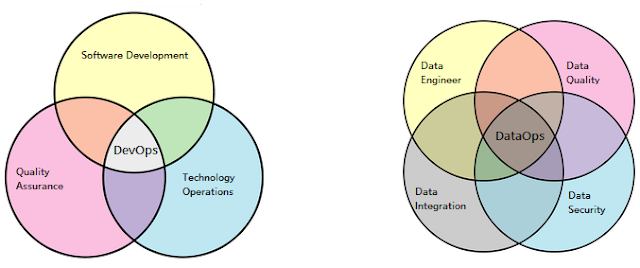Top 5 ETL Tools For 2022
Introduction
ETL happens to be the most important process of data warehousing and obtaining actionable insights. Most tools in the market are unique in their own way where one size fits all approach doesn’t work here. Identifying which tool suits your business’s data requirements is the key.
Every tool handles data in different ways and offers various types of functionality in terms of connectors, transformations, pipelines, deployment, visualization, etc. In such a case, we have picked the five best ETL/ELT tools in the market. Study, compare and decide for yourself.
Sprinkledata
Sprinkle is an ELT tool, end to end data integration and analytics platform enabling users to automate the complete journey of collating data from various data sources to ingesting them into a preferred data warehouse to building reports. And all these processes happen in real-time.
Pros:
Zero-code Ingestion: Automatic schema discovery and mapping of data types to the warehouse types. Supports JSON data as well
Built in Data Visualization & BI: Does not require separate BI tool
No proprietary Transformation code: Sprinkle does ELT (offer much more flexibility and scaling than the legacy ETL). Write transformations in SQL or python
Jupyter Notebook: Integrated environment to do EDA and production-ize ML pipeline from the Jupyter notebooks in single-click
No data leaves customer’s network: Sprinkle offers Enterprise version that can run on customer’s VM within the customer’s Cloud
Cost Effective: Payment model is not based on the number of rows, as the rows are unlimited with Sprinkle, users wouldn't have to worry about the costs as their business and data scales
Cons:
Some of the chart types not supported yet
Informatica
Power center is a tool from Informatica’s pool of tools for cloud data management. Informatica Power Center focuses on providing agility in data integration. It serves as a core to data integrations where the focus is to reduce manual hand coding and accelerating the automation.
Pros:
Reading, Transforming and Loading Data to and from databases, and more importantly the speed of these operations
Good tool to manage legacy data and to make it compatible with modern applications
PowerCenter also has other additional features like the ability to profile data, visualize graphical data flow, etc
Cons:
The built-in scheduling tool has many constraints such as handling Unix/VB scripts etc. Most enterprises use third party tools for this
Not very user friendly GUI and the management of EII processes (like Restful or SOAP) are not well supported by the on-premise solution.
The licensing fee is huge, businesses with small budgets can’t usually opt this tool
Alteryx
Alteryx is an end-to-end data analytics platform for organizations that allow analysts to solve complex business problems in a jiffy. Code-free, deployable analytics and the scaling analytics for organizations transforms into performance, security and governance.
Pros:
Cleaning data sets, transforming from one format to another are the key attributes of Alteryx
The tool has built in methods for data preparation and merging data sets
Scheduling the flows and reporting, Python Integration helps to ease out the process
Good Interfacing where it helps with quick drag and drop functionality to create a workflow
Cons:
Data visualization is a drawback, needs an external tool like Tableau or Power BI
Too expensive, although training and support is freely accessible
The API connections are limited. Although they run a macro which can be created and connected to any API, it’s not direct
Alteryx doesn’t run on MacOS, it only runs with a virtual machine product which emulates windows within a MacOS
SSIS
SQL Server Integration Services is an enterprise-level data integration and data transformation platform. SQL Server Integration Service helps solve complex business problems by collecting data from various sources, loading into the data warehouse, cleansing and managing SQL Server objects and data.
Pros:
A tool for complex transformations, compiling data from various sources, and structure exception handling
SSIS provides unique transformations and is tightly integrated with Microsoft Visual Studio and SQL Server
Has a complete suite of configurable tools and also enables source system connectivity (API's, SQL DB's, Olap Cubes, etc)
Cons:
When users work with multiple packages in parallel, the SSIS memory usage is high and it conflicts with SQL
Doesn’t work efficiently with JSON-related data, Unstructured datasets can be challenging to work with
Has major issues with version control, happens to be a pain point where users deal with many different sources
Fivetran
Fivetran is a cloud based ETL tool which is known for its large number of custom data source integrations. Fivetran has resource driven schemas which are prebuilt, automated and ready-to-query.
Pros:
Fivetran provides post-load transformation functionality for modeling from SQL-based transformations
Fast setup; plug and play integration with any application
Automatic schema migrations, requires zero coding for transformations
Only the active rows are considered when it comes to pricing
Cons:
Requires an external tool for visualization and BI part as it does just the ELT part
Fivetran only offers one direction data sync and doesn’t provide two way directional sync
Fixed schemas; The users cannot control the data sent to any specific destination
Article Source: https://www.sprinkledata.com/blogs/top-5-etl-tools-for-2022


Comments
Post a Comment